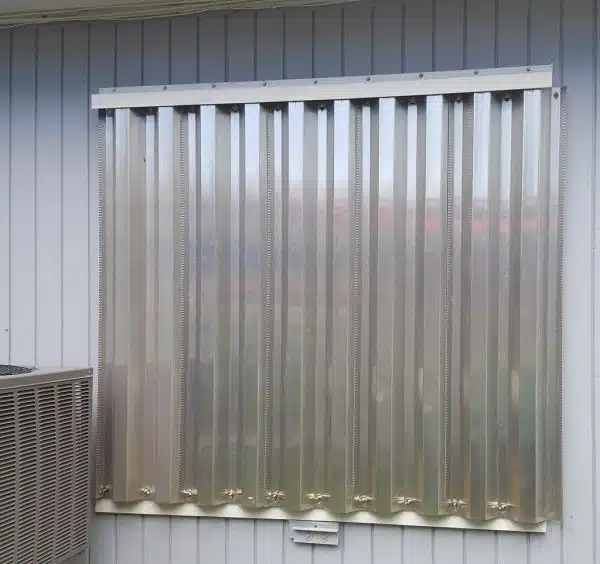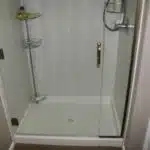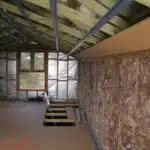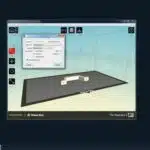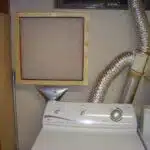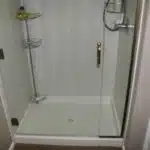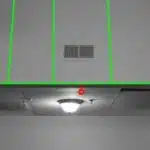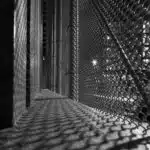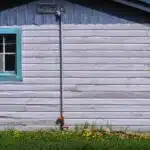Hurricane shutters are an essential element for homes in areas prone to hurricanes or severe storms. These protective coverings offer a simple and effective way to protect your windows and doors from strong winds, flying debris, and heavy rain. Installing hurricane shutters can be a daunting task, but with the right tools, materials, and techniques, it can be done with ease.
In this article, we’ll provide you with a step-by-step guide on how to install hurricane shutters for your home. We’ll walk you through the process of measuring your windows and doors accurately, selecting the right type of shutter material for your needs, preparing the installation location, and finally installing the shutters themselves. By following these instructions carefully, you can ensure that your home is well-protected during any storm season that comes your way. So let’s get started!
Assess Your Home’s Needs
Before you install hurricane shutters, you need to assess your home’s needs. One of the most important factors to consider is the durability of the materials used in constructing your home. Some homes may require stronger hurricane shutters if they are located in areas prone to severe weather conditions. It is essential to choose durable and robust materials that can withstand high winds and heavy rain.
Another crucial factor to consider when installing hurricane shutters is finding professionals who can help you with the installation process. While it is possible to install hurricane shutters on your own, it is always recommended that you seek professional assistance. Professionals have access to specialized tools and equipment that make installation easier and more efficient. They also have experience working with different types of homes and can recommend the best type of hurricane shutter for your specific needs.
To ensure that your home remains safe during a storm, it is important to assess its needs carefully before installing hurricane shutters. Consider the durability of your home’s construction materials, as well as seeking professional assistance for proper installation. With these factors in mind, you can choose the right type of hurricane shutter for your home and protect it from damage during severe weather conditions. In measuring your windows and doors, take note of their dimensions so that you can obtain accurate measurements for ordering or purchasing the appropriate hurricane shutter material needed for each window or door opening in your home.
Measure Your Windows And Doors
Before you purchase hurricane shutters, it is crucial to measure your windows and doors for measuring accuracy. Measuring the dimensions of your windows and doors may seem like a simple task, but common mistakes can lead to ill-fitting shutters, which will not provide adequate protection during a hurricane.
The first step in measuring your windows and doors is to determine their shape and size. Measure both the width and height of each window or door opening, as well as the distance between them. Be sure to measure each opening at least twice to ensure that your measurements are accurate.
Common mistakes that people make when measuring their windows and doors include failing to account for obstacles such as handles or locks, measuring only one side of the window or door, or failing to measure from the edge of the frame. By taking care to avoid these common errors, you can ensure that your hurricane shutters will fit correctly and provide maximum protection for your home during a storm.
Now that you have measured your windows and doors correctly, it’s time to choose the right type of shutter.
Choose The Right Type Of Shutter
When it comes to hurricane shutters, there are a variety of types available for installation. Cost is an important factor to consider when selecting a shutter, as the price can range from relatively affordable to quite expensive. Additionally, durability should be taken into account when choosing a shutter, as some types may be more prone to damage from severe weather than others. Finally, it is important to consider the local regulations and building codes when selecting a shutter, as some types may not be allowed in certain areas.
Types Of Shutters
When it comes to hurricane shutters, there are various types that homeowners can choose from. Two popular options include roll up shutters and accordion shutters. Roll up shutters are typically made of aluminum or steel and are designed to be installed on the exterior of windows and doors. These shutters are operated either manually or automatically and can be rolled up when not in use.
Accordion shutters, on the other hand, consist of interlocking panels that fold away neatly when not in use. Unlike roll up shutters, accordion shutters do not require any storage space as they remain attached to the exterior of windows and doors at all times. Accordion shutters also offer additional benefits such as being easy to operate and providing an added layer of security against forced entry.
Ultimately, choosing between roll up shutters and accordion shutters will depend on a homeowner’s individual needs and preferences. Factors such as budget, ease of installation, and aesthetic appeal should all be taken into consideration when selecting the right type of shutter for your home. By doing so, you can ensure that your home is well-protected during hurricane season while also maintaining its overall appearance and functionality.
Cost
When it comes to choosing the right type of shutter for your home, one important factor that you should consider is the cost. The cost of hurricane shutters can vary depending on several factors such as the size of your windows and doors, the materials used, and the type of installation.
If you’re looking for a budget-friendly option, roll up shutters may be a good choice for you. These shutters are typically less expensive than accordion shutters and can be installed either by a professional or as a DIY project. However, keep in mind that if you opt for a professional installation, it can add to the overall cost.
On the other hand, accordion shutters may offer more long-term savings as they require little maintenance and have a longer lifespan than roll up shutters. While they can be more expensive upfront, their ease of use and added security benefits may make them worth the investment. Additionally, because accordion shutters require professional installation due to their interlocking panel design, it’s important to factor in this additional cost when considering this option.
Select The Best Material For Your Shutter
When selecting the best material for your hurricane shutters, you have several options to choose from. Each material comes with its own set of pros and cons, so it’s important to weigh these factors before making a decision. The most common materials used for hurricane shutters include aluminum, steel, polycarbonate, and impact-resistant glass.
Aluminum is a popular choice due to its affordability and durability. It’s lightweight and easy to install, making it an ideal option for DIYers. However, aluminum can dent easily and may not provide as much protection against high winds as some other materials.
Steel is another strong option that offers excellent protection against harsh weather conditions. It’s also highly durable and resistant to corrosion. However, steel is heavier than aluminum and may require professional installation.
Polycarbonate is a newer type of material that has gained popularity in recent years due to its strength and versatility. It’s lightweight yet strong enough to withstand high winds and flying debris. However, polycarbonate can be more expensive than other options.
In summary, each material has its own advantages and disadvantages when it comes to hurricane shutters. Consider what matters most to you in terms of cost, durability, weight, and level of protection when choosing the right material for your home. In the next section, we’ll discuss how to decide on a budget for your hurricane shutter installation project.
Decide On A Budget
After selecting the best material for your hurricane shutters, it’s time to decide on a budget. This is an essential step that will help you set realistic expectations and avoid overspending. Keep in mind that the cost of hurricane shutters varies depending on the materials used, size, and design. However, don’t let price be the only factor guiding your decision; make sure to weigh all factors before making a final choice.
To help you compare prices and features of different shutters, you can consult with a professional or conduct research online. Look for reputable companies or websites that offer high-quality products at reasonable prices. Don’t forget to check for reviews and ratings from previous customers to ensure their satisfaction with the product and service.
Once you have set your budget and compared prices, it’s time to gather your tools and materials. You’ll need a drill, screws, anchors, brackets, bolts, nuts, washers, measuring tape, leveler, ladder or scaffold (depending on how high your windows are), and of course, your chosen hurricane shutter material. Make sure everything is organized and easily accessible before starting the installation process. With these steps completed successfully, you’re now ready to begin installing your hurricane shutters!
Gather Your Tools And Materials
Before you start installing hurricane shutters, it is important to gather all the necessary tools and materials. Having everything you need at hand will make the installation process smoother and faster. To ensure that you have all the tools required, create a checklist of items before starting your installation project.
Some of the essential tools needed for hurricane shutter installation include drill bits, screws, anchors, measuring tape, saws, hammers, and screwdrivers. All of these are readily available in most hardware stores or online. It is also essential to ensure that your power drill is fully charged before use.
When it comes to choosing materials for your hurricane shutters, there are several options available. Some of the popular choices include aluminum panels, Bahama-style shutters made from aluminum or wood, colonial-style shutters made from vinyl or wood composite materials. Each has its own benefits and drawbacks which should be taken into account when making a decision on which material best suits your needs.
Having gathered all the necessary tools and chosen the best-suited material for your hurricane shutters installation project, you are now ready to move on to preparing the installation location. This step involves assessing the area where the shutters will be installed and ensuring that it is suitable for shutter placement.
Prepare The Installation Location
With your tools and materials gathered, it’s time to clear the installation location of any debris. This step is crucial to ensure that the shutters can be installed properly and have a secure fit. Clearing debris also helps to prevent damage to the structure during installation. Remember, a strong foundation is key to keeping your home protected during a hurricane.
Once you’ve cleared the area, it’s time to strengthen the structure where the header and footer tracks will be installed. Hurricane shutters are designed to withstand high winds and flying debris, but they require proper support for optimal performance. Use wood screws or lag bolts to secure header and footer tracks directly into wall studs or reinforced framing. This will provide additional reinforcement for your shutters and help prevent damage from wind pressure.
By clearing debris and strengthening the structure, you’re setting yourself up for success when it comes time to install header and footer tracks. These steps may seem small, but they’re integral parts of preparing your home for hurricane season. Don’t rush through them or cut corners – taking the time now will save you headaches later on. With a solid foundation in place, you’ll be ready for the next step in installing your hurricane shutters.
Install Header And Footer Tracks
Header and Footer Placement: Before installing the tracks for hurricane shutters, it is crucial to place the header and footer in their proper positions. The header track should be placed at the top of the window, while the footer track goes on the bottom. To ensure accuracy, use a measuring tape to mark where each track will be installed.
Installing Tracks for Shutters: Once you have determined where the header and footer tracks will go, it’s time to install them. Start by drilling pilot holes into each marked spot. Then, screw in the provided screws with a power drill or screwdriver. Repeat this process until all of the tracks are securely attached to your home.
Transitioning to Mounting Shutters: Now that you have properly placed and installed your header and footer tracks, it is time to move onto mounting your hurricane shutters. This step involves attaching the shutters onto the tracks using locking pins or screws. Follow these steps carefully to ensure that your shutters are secure and ready for whatever weather may come your way.
Mounting The Shutters
When it comes to mounting hurricane shutters, there are a few anchoring options to consider. One option is to use screws and anchors directly into the wall or window frame. Another option is to use tracks that are mounted onto the wall and then the shutters slide into place. A third option is to use hinge clips that attach directly to the shutters and then clip onto the wall.
Before beginning the installation process, it’s important to consider whether you feel confident in your abilities or if you should seek professional installation. While mounting hurricane shutters may seem straightforward, it can be a complex process that requires precise measurements and attention to detail. Additionally, professional installers may be able to offer additional advice on anchoring options and ensure that your shutters are securely mounted.
Anchoring options aside, proper mounting of hurricane shutters ensures maximum protection during severe weather events. With this in mind, it’s crucial not to rush through the installation process or cut corners when installing your shutters. Taking the time to properly mount your hurricane shutters will provide peace of mind knowing that you’ve taken all necessary precautions for protecting your home.
- Types of Anchors
- Expansion Anchors
- Toggle Bolts
- Wedge Anchors
Incorporating an anchor system into your shutter installation will only serve as added protection for high winds or flying debris during a storm. Professional installers have experience with many different types of anchors and may be able to provide insight on which type of anchor would work best for your specific home structure. Once you have chosen an anchoring method, carefully follow instructions on how much space should be left between each anchor point and make sure that each shutter panel is properly installed before moving onto any subsequent steps.
Install Center Stops
Center stops are an essential component of hurricane shutters. They serve as a restraint to prevent the panel from moving too far once installed. Center stops keep the shutter panels aligned and in place during high winds, preventing them from getting dislodged and causing damage. Installing center stops is a vital step in ensuring that your home is protected during a hurricane.
One of the benefits of installing center stops is that they help to distribute the force of the wind more evenly across the shutter panel, reducing stress on individual fasteners and screws. This helps to prevent failure at critical points, ensuring that your shutters remain securely in place during a storm. Common mistakes with center stops include failing to install them at all or placing them too far apart, which can cause gaps between panels and lead to damage during high winds.
To install center stops correctly, measure the distance between each hinge and mark it on both sides of the panel so that you know where to drill holes for fastening. Next, drill pilot holes through the marked points for each stopper and insert screws into each hole until they’re flush with the surface of your shutter panel. Remember to space your center stops even distances apart for optimal performance.
Now that you have installed your center stops correctly, it’s time to secure the shutters.
Secure The Shutters
When choosing hurricane shutters, it is important to consider the size, shape, and type of shutter that is best suited for the property. Measurements should be taken to ensure the shutters fit properly. Proper installation of hurricane shutters is essential for them to be effective in protecting the property. Different types of shutters require different installation techniques, and the process should be done carefully and with the right materials.
Choosing Shutters
When it comes to choosing shutters for your home, there are a variety of styles available, each with their own unique benefits. One popular option is accordion shutters, which are easy to operate and can be quickly deployed when needed. Another choice is colonial shutters, which add a charming aesthetic to any home while still providing protection from hurricanes. Additionally, roll-down shutters are convenient for those who want to easily control the amount of light that enters their home.
However, it’s important to consider cost when making your final decision. While some shutter styles may seem more attractive or practical than others, they may also come with a higher price tag. For example, accordion shutters tend to be more expensive than other options due to their ease of use and quick deployment capabilities. On the other hand, colonial shutters may be more affordable but require more effort and time to install.
Ultimately, choosing the right shutter style for your budget and needs requires careful consideration and cost comparison. Don’t rush into a decision just because one style seems appealing at first glance – take the time to weigh all of your options before making a final purchase. With the right shutter selection in place, you can rest easy knowing that your home will be protected during even the strongest hurricanes.
Installing Shutters
When it comes to securing your home from potential hurricane damage, installing shutters is a crucial step. However, the process can be daunting for those who have never tackled a home improvement project like this before. That’s why having some shutter installation tips and a DIY shutter installation guide can be extremely helpful.
One important tip is to ensure that you have all of the necessary tools and materials before beginning the installation process. This may include a drill, screws, anchors, and a level. It’s also important to measure your windows accurately to ensure that the shutters will fit properly. If you’re unsure about any aspect of the installation process, don’t hesitate to seek guidance from a professional or do some additional research beforehand.
Another key consideration when installing shutters is the type of mounting system that will work best for your home. There are several options available, including direct mount, hinge mount, and track mount systems. Each has its own unique advantages and disadvantages, so it’s important to choose one that suits your specific needs and preferences.
Overall, while installing shutters may seem overwhelming at first glance, following some basic shutter installation tips and utilizing a DIY shutter installation guide can make the process much more manageable. With careful attention to detail and proper preparation, anyone can successfully install shutters on their home and enjoy the peace of mind that comes with knowing their property is protected from hurricane damage.
Test The Shutters
Once the installation is complete, it is essential to test the shutters to ensure they are functioning correctly. A proper test procedure can provide peace of mind and help you prepare for any potential storm or hurricane. Before testing, it is crucial to observe safety precautions. Make sure you have a partner to assist you during testing, wear gloves and eye protection, and avoid standing directly under the shutter.
To begin testing, start by checking all bolts and nuts for tightness. Then, operate each shutter individually to make sure they open and close smoothly. Be sure to inspect the tracks and rollers for any debris that could cause obstruction. Once you confirm that each shutter operates correctly, test them as a group by closing them simultaneously.
After completing the testing procedure, perform a final visual inspection of all shutters’ components. Ensure there are no loose or missing parts and that all anchors are secure. If you notice any issues during testing or inspection, address them immediately before considering your hurricane shutters fully installed.
Now that your hurricane shutters are installed and tested for functionality let’s move on to maintaining them properly.
Maintaining Your Hurricane Shutters
As the hurricane season approaches, it is vital to ensure that your hurricane shutters are in good condition. After installing them, you still need to maintain them to keep them functioning correctly when you need them most. As the old saying goes, “an ounce of prevention is worth a pound of cure.” This section will cover essential maintenance tips for your hurricane shutters.
The first step in maintaining your shutters is to conduct seasonal inspections. Every fall and spring, inspect your shutters for any signs of wear and tear. Check if all the fasteners are tight and ensure that there are no cracks or dents on the shutters. If you notice any damage, fix it immediately before the next storm arrives.
Cleaning methods for hurricane shutters depend on their material type. Aluminum or steel shutters can be cleaned with a mild detergent and water solution. Use a soft-bristled brush to remove dirt or debris that may have accumulated on them over time. Wooden shutters should be cleaned with a wood cleaner and protected with a sealant after cleaning.
Ensuring your hurricane shutters are well-maintained can save you money in repairs and replacements while keeping you safe during storms. In the next section, we will discuss how to remove your hurricane shutters when they’re no longer needed after storm season has passed.
Removing Your Hurricane Shutters
Once the hurricane season has passed, it is time to think about removing your hurricane shutters. While they are an essential tool for protecting your home and family during a storm, they can be cumbersome to leave up all year round. Before you start taking them down, consider the pros and cons of leaving them up or taking them down.
One advantage of keeping your hurricane shutters up year-round is that they offer protection against more than just hurricanes. They can also help to deter burglars and vandals, as well as reduce noise from outside. However, leaving them up can also cause damage to the shutters themselves due to exposure to sunlight and weather conditions. It may also detract from the aesthetic appeal of your home.
When removing your hurricane shutters, it is important to take proper maintenance tips into consideration. Make sure you have all necessary tools on hand, including gloves, safety glasses, and a ladder if needed. Inspect each shutter for any signs of damage before storing them away in a dry location that is protected from moisture and pests.
In conclusion, while leaving your hurricane shutters up year-round has its advantages, taking them down after the storm season has passed will help prolong their lifespan and ensure that they are functioning properly when you need them most. By following proper maintenance tips when removing and storing your shutters, you can rest assured that they will be ready for use when the next hurricane season arrives.
Conclusion
In summary, hurricane shutters are an excellent investment that provides numerous benefits to homeowners. These shutters offer protection from high winds, flying debris, and water damage caused by hurricanes. Additionally, they can help reduce your home insurance premiums and increase the resale value of your property.
When it comes to installation, homeowners have two options: professional installation or DIY installation. While DIY installation may seem like a cost-effective solution, it’s important to note that installing hurricane shutters requires specialized tools and expertise. Professional installation guarantees that your shutters are installed correctly and effectively.
Overall, the benefits of installing hurricane shutters far outweigh the costs. Not only do they provide peace of mind during hurricane season, but they also offer long-term protection for your home. Whether you choose to go with professional or DIY installation, make sure to prioritize safety and quality when selecting your hurricane shutters.
Conclusion
Hurricane shutters are an essential component of protecting your home from the destructive forces of a hurricane. Installing them may seem like a daunting task, but by following a few simple steps, you can ensure that your home is well-equipped to withstand the storm.
To begin, assess your home’s needs by identifying which windows and doors need to be covered. Measure the dimensions of each opening and choose the right type of shutter for your specific needs. Whether you opt for accordion shutters or roll-up shutters, make sure to select a material that is durable and long-lasting.
Once you have selected the best type and material for your shutters, decide on a budget and test them out before installation. It is also important to maintain your shutters regularly to ensure that they are in top condition when needed. When it comes time to remove them after hurricane season, follow proper procedures to avoid damage or injury.
According to the National Hurricane Center, hurricanes can cause up to $54 billion in damages each year. By installing hurricane shutters, homeowners can potentially save thousands of dollars in repair costs and protect their families from harm. Don’t wait until it’s too late – invest in hurricane shutters today and give yourself peace of mind during storm season.
Image Credits
- “Test run of the hurricane shutters” by the queen of subtle (featured)

